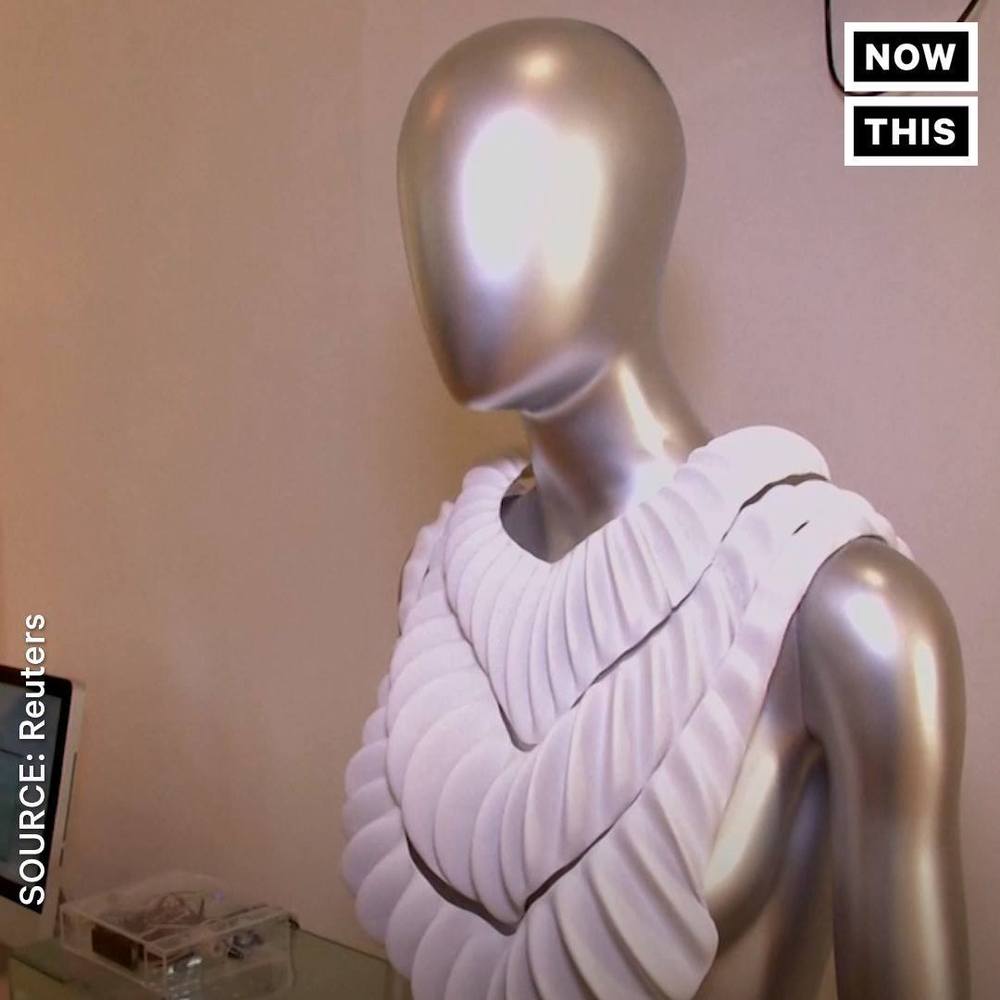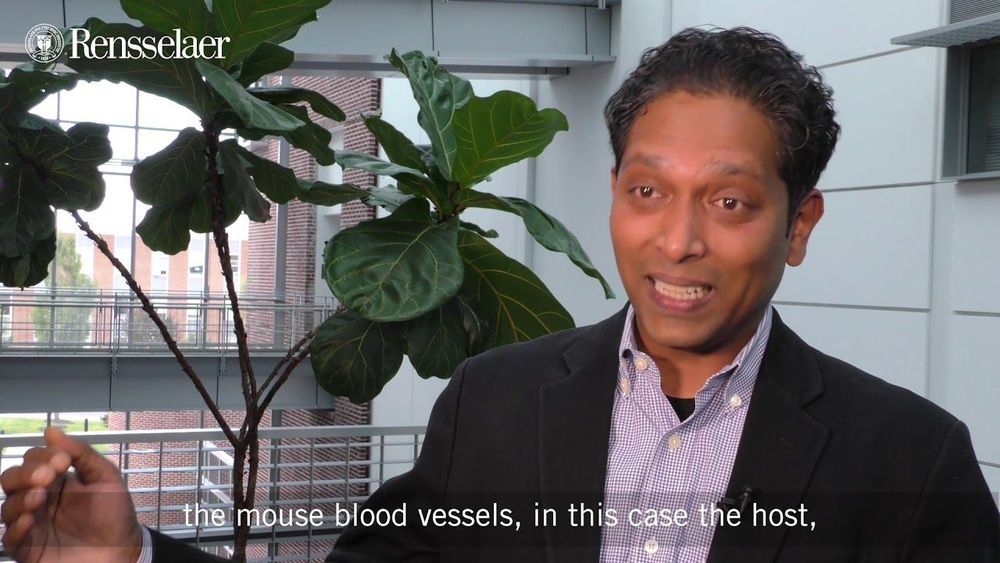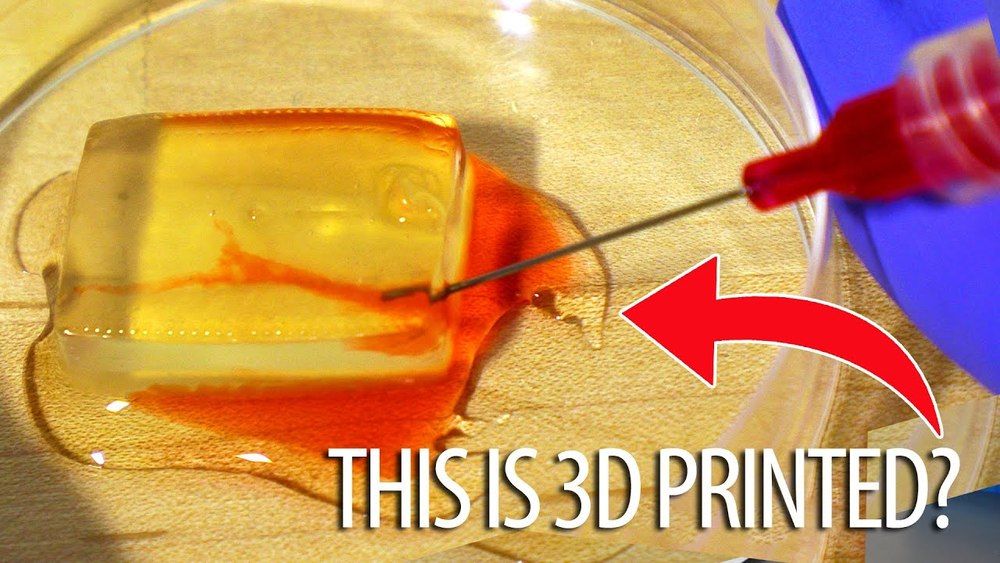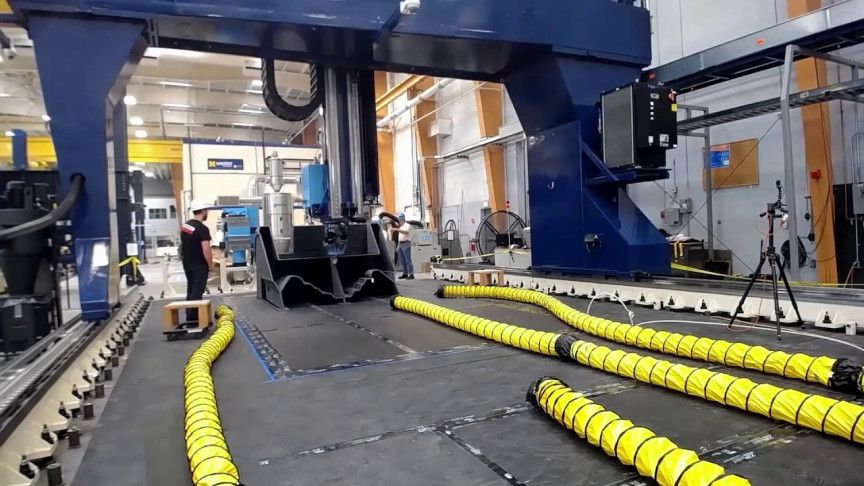New technique makes it easier to build stable “tissues”.
Category: 3D printing – Page 57
Researchers claim to have 3D-printed skin that’s alive and has blood vessels. The new technique could greatly accelerate the healing process for patients who require skin grafts, such as burn victims. In an animal trial phase, the printed skin even connected to a mouse’s own blood vessels.
This could be a game changer for burn victims.
Researchers at Rensselaer Polytechnic Institute have developed a way to 3D print living skin, complete with blood vessels. The advancement, published online today in Tissue Engineering Part A, is a significant step toward creating grafts that are more like the skin our bodies produce naturally.
“Right now, whatever is available as a clinical product is more like a fancy Band-Aid,” said Pankaj Karande, an associate professor of chemical and biological engineering and member of the Center for Biotechnology and Interdisciplinary Studies (CBIS), who led this research at Rensselaer. “It provides some accelerated wound healing, but eventually it just falls off; it never really integrates with the host cells.”
A significant barrier to that integration has been the absence of a functioning vascular system in the skin grafts.
A failing pipe can be tough to spot. It may cause a puddle, produce another sign of damage, or simply burst before detection. A flooded kitchen or laundry room is messy and inconvenient, but the stakes are much, much higher in nuclear power plants—which on average contain many miles of pipeline.
As concern about aging plants escalates, Vanderbilt engineers are working on an early warning system. They are using polymer coatings on the inside of the pipe and 3D-printed polymer devices infused with nanoparticles as sensors to signal the changes on the outside of the pipe. And, they hope, sound.
A huge challenge is to detect the changes in the polymer film occurring inside the pipe. To create a useful and proactive technique, the team wants to use sound, or vibrometry, to identify these internal changes from outside the pipe.
Bio printing footage provided by College of Engineering, and heart valve footage provided by Regenerative Biomaterials Group, Carnegie Mellon University.
https://regenerativebiomaterials.com/
Lulzbot invited us out to showcase the BIO, their OPEN SOURCE 3D printer capable of 3D bioprinting. Materials like unmodified collagen and fetal stem cells! It’s open source, and launches at a price of $7500 USD.
http://www.lulzbot.com/bioprinting
#3dprinting #3dbioprinting #lulzbotbio
I n August, three graduate students at Carnegie Mellon University were crammed together in a small, windowless basement lab, using a jury-rigged 3D printer frame to zap a slice of mouse brain with electricity.
The brain fragment, cut from the hippocampus, looked like a piece of thinly sliced garlic. It rested on a platform near the center of the contraption. A narrow tube bathed the slice in a solution of salt, glucose, and amino acids. This kept it alive, after a fashion: neurons in the slice continued to fire, allowing the experimenters to gather data. An array of electrodes beneath the slice delivered the electric zaps, while a syringe-like metal probe measured how the neurons reacted. Bright LED lamps illuminated the dish. The setup, to use the lab members’ lingo, was kind of hacky.
University of Maine’s Advanced Structures and Composites Center just printed a 25-foot, 5,000-pound boat, the largest object that has ever been printed. The exorbitant act earned the college no less than three Guinness World Records.
The awards are as follows: one for the world’s largest prototype polymer 3D printer, one for the largest solid 3D-printed object, and one for the largest boat which has ever been produced by a 3D printer. The 3D printer is designed to print objects as long as 100 feet by 22 feet wide by 10 feet high, and can print at 500 pounds per hour.
“As we saw today, the University of Maine Composites Center does award-winning, cutting-edge research that makes Maine proud and will bring jobs to our state,” said U.S. Rep. Jared Golden. “Their work, like the boat and 3D printer we’re here to see, has impressive potential to change how we make things out of all sorts of materials — including Maine wood fiber. Today is about three Guinness World Records, but it’s also about celebrating innovation that will help protect and create good-paying Maine jobs in forest products and manufacturing.”
3D Printing was one example of how technological advancement made manufacturing accessible to all. Will robots take all the jobs? I doubt it, but technological advancement will make many things inaccessible, accessible to many more than before, by lowering the cost of production. This is but one example.
Better clear out several shelves of storage space, vinylheads, because your record collection is about to expand into infinity. Soon, you’ll be able to get absolutely anything on vinyl. Even better—you’ll be able to make it.
The Phonocut is an at-home vinyl lathe, allowing anyone with a digital audio file and a dream to make a 10-inch record.
Check out the new shape-shifting robot made out of “smarticiles” that show a new locomotive strategies!! https://www.sciencedaily.com/releases/2019/09/190918140759.htm ~via ScienceDaily… #churchofperpetuallife #perpetuallife #sciencedaily
Building conventional robots typically requires carefully combining components like motors, batteries, actuators, body segments, legs and wheels. Now, researchers have taken a new approach, building a robot entirely from smaller robots known as “smarticles” to unlock the principles of a potentially new locomotion technique.
The 3D-printed smarticles — short for smart active particles — can do just one thing: flap their two arms. But when five of these smarticles are confined in a circle, they begin to nudge one another, forming a robophysical system known as a “supersmarticle” that can move by itself. Adding a light or sound sensor allows the supersmarticle to move in response to the stimulus — and even be controlled well enough to navigate a maze.
Though rudimentary now, the notion of making robots from smaller robots — and taking advantage of the group capabilities that arise by combining individuals — could provide mechanically based control over very small robots. Ultimately, the emergent behavior of the group could provide a new locomotion and control approach for small robots that could potentially change shapes.








